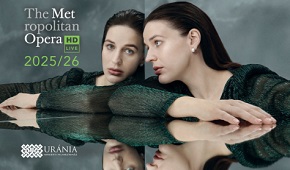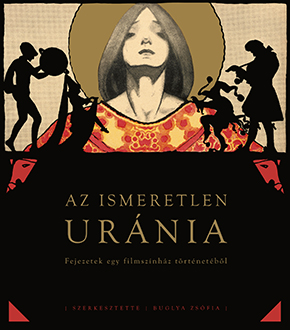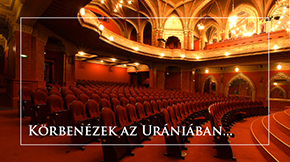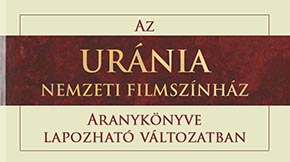Architecture
Extracts from the study by Ferenc Bor and Zoltán Fehérvári
"Uránia, the Theatre of Hungarian Sciences – Uránia Film Theatre"
In: Budapesti mozik 100 éve. Budapest: Ernst Múzeum, 2001. pp. 92-111.
“In the summer of 1895, Kálmán Rimanóczy, master builder, submitted to the local council a request for permission to construct the building in Kerepesi street. The plans for the four-storey apartment block and for the related concert and ball hall were made by Henrik Schmahl, monument architect.
Hamburg-born Schmahl (1846–1913) who had a unique style of late Historicism, worked his way up from builder to independent architect. He worked together with Miklós Ybl during the construction of Fővámház and the Opera House. He started his architecture career in the early 1880s. In keeping with the spirit of his times, he made construction plans in a neo-Renaissance style, but from the early 1990s on he gradually developed his unmistakably unique style, which was characterized by the ornamental motifs of the Venetian Gothic and Moor styles. Besides his prominent apartment blocks in Andrássy street (at 13, 28, 52, and 102), several significant mansions of his can be seen in Nagykörút. As early as the 1880s, Schmahl became a specialist in constructing commercial-residential buildings containing frame structures. The building at 9 Kossuth Lajos street is typical of that style as well as the buildings at 7 and 21 Rákóczi street, and the destroyed Deutsch (at the 22, József Attila street) department store. His late-in-life masterpiece is the building of the Belvárosi Takarékpénztár now known as Párisi Udvar where his favourite Moor features were enhanced with Secession motifs. In the early construction plans of all the buildings mentioned above, a shift in his style, with the emergence and prevalence of Venetian Moor elements can be detected.”
“The four-storey building in the historicising style established in a closed row of blocks was originally meant to be a residential building, but presently, on its two lower floors, a film theatre can be found. […] The five-axis, 1-3-1 arranged street front follows the front arrangement of the late 14th century Venetian palazzos with its broken, ethereal features relying on robust light and shadow effects, while the ornamentation of the architectural parts bears Moor characteristics.”
“Its interior is separated into two parts. Because of the creation of the engine-house, the film theatre reaches up to the second floor in addition to the two lower floors. In its interior, thanks to the ubiquitous ornamental decoration, gilding, dimness and mystical light effects, the oriental features are more prominent. The University of Theatre and Film Arts occupies the old residential part of the building over the second floor.”
“The construction of the majority of the structural and decorative elements is illusionary. Nothing is what is seems: almost everything is made from painted plaster, the coating of the ‘wooden ceilings’, the consoles, and the pillars. The ornamental decoration of the wall is also deceptive as it creates the image of wallpaper.”
“Even in the outstandingly varied Historicism of Budapest, the works of Schmahl deserve a special place. The works of this illustrious artist bearing the characteristics of the Italian and German Renaissance, are prominent, refined pieces of artwork. His later buildings in his unique style are unmistakable and typical of only him. It is worth mentioning in particular a beneficial consequence of his work, namely the rows of multi-function blocks motivated by the needs of the late twentieth century. […]
Uránia is a dual-function building as well: in addition to the rooms meant for entertainment, flats were built on the three floors of the street front. Among similar dual-function buildings, including theatres and dance halls nothing similar exists. Thanks to its unique building type and retention of its original function, adapted to the needs of changing times, Uránia is part of our cultural heritage and worthy of our appreciation.”
Rodrigue in Love (16)
TicketsCall Us17:00 Fábri teremThe Braid (12)
TicketsCall Us17:00 Csortos teremThe Phoenician Scheme (16)
TicketsCall Us17:15 Törőcsik Mari teremI Accidentally Wrote a Book (12)
TicketsCall Us19:00 DíszteremKyuka: Before Summer's End - Pre -Premier Screening (12)
TicketsCall Us19:00 Csortos teremF1 (12)
TicketsCall Us19:30 Fábri teremA House on Fire (16)
TicketsCall Us19:30 Törőcsik Mari teremShepherds (12)
| Mo | Tu | We | Th | Fr | Sa | Su |
|---|---|---|---|---|---|---|
| 30 | 1 | 2 | 3 | 4 | 5 | 6 |
| 7 | 8 | 9 | 10 | 11 | 12 | 13 |
| 14 | 15 | 16 | 17 | 18 | 19 | 20 |
| 21 | 22 | 23 | 24 | 25 | 26 | 27 |
| 28 | 29 | 30 | 31 | 1 | 2 | 3 |
![]()
2025.07.19 19:00 - 20:50
2025.07.20 19:00 - 20:45
07.21 - 07.25
2025.07.23 19:00 - 20:45
2025.07.26 19:00 - 22:00
2025.08.09 19:00 - 21:00
2025.08.10 18:00 - 21:30
2025.08.13 19:00 - 21:00
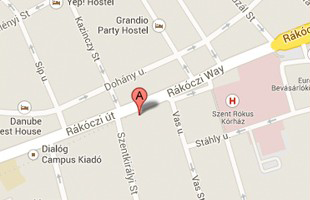
Opening hours: Summer opening hours from June 26 to August 28, 2025! During this period, the box office opens on weekdays at 4:30 PM, on weekends at 10:30 AM.
Box office closes 15 minutes after the start of the last screening.
The Uránia Café is open during the opening hours of the cinema.
© Uránia Nemzeti Filmszínház
1088 Budapest, Rákóczi út 21.
getting here
ticket info
contact us
company details
press
privacy policy










